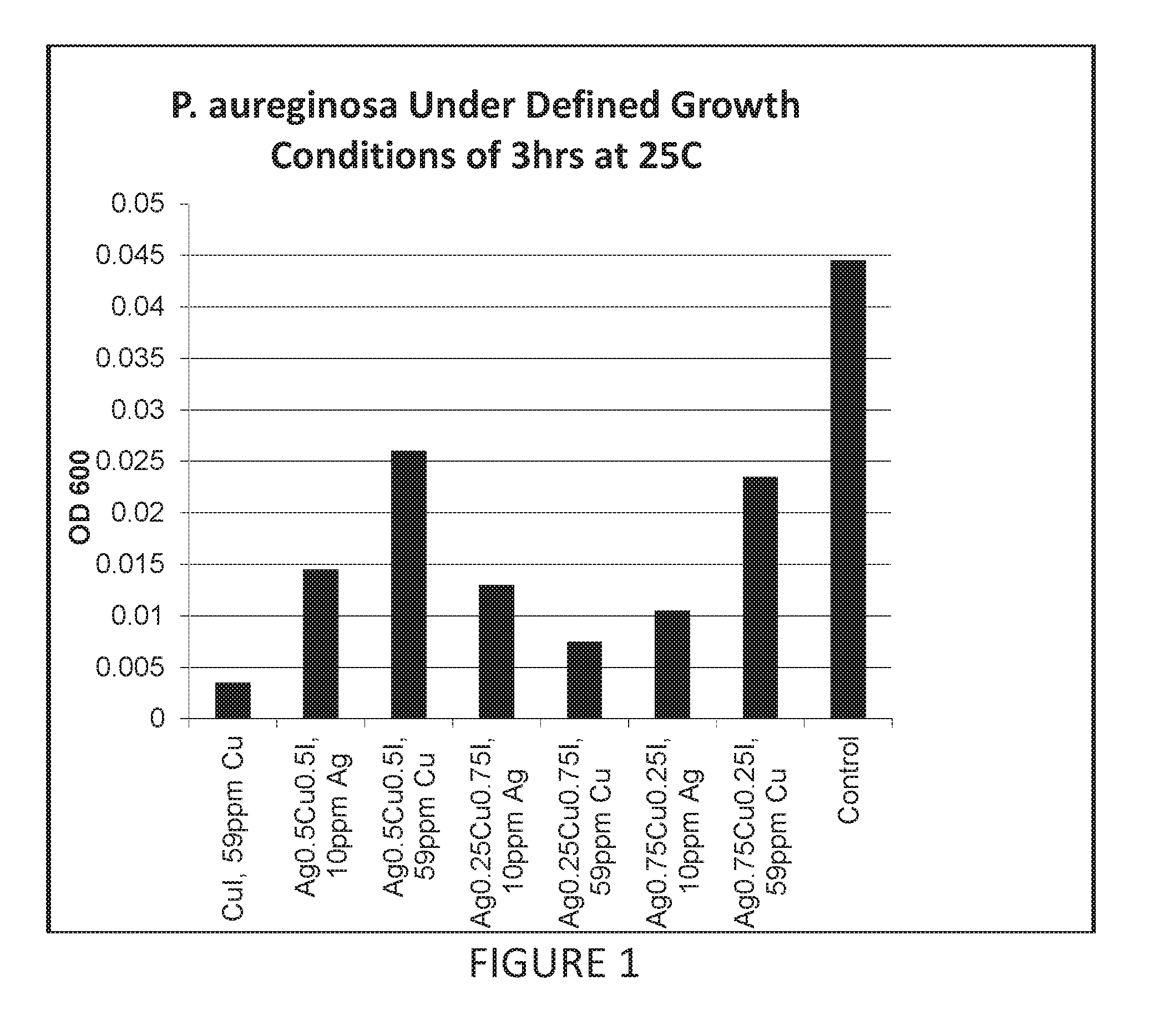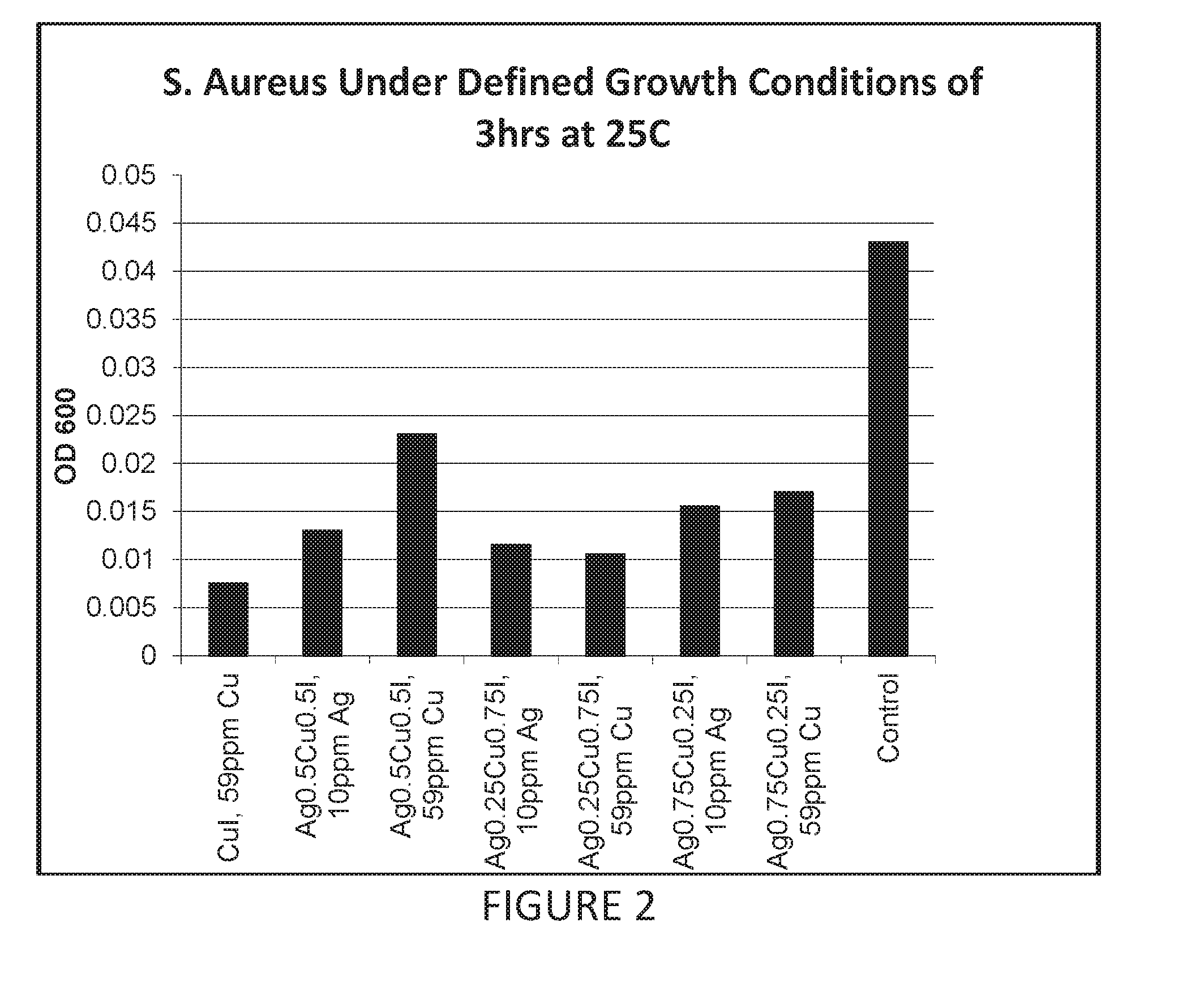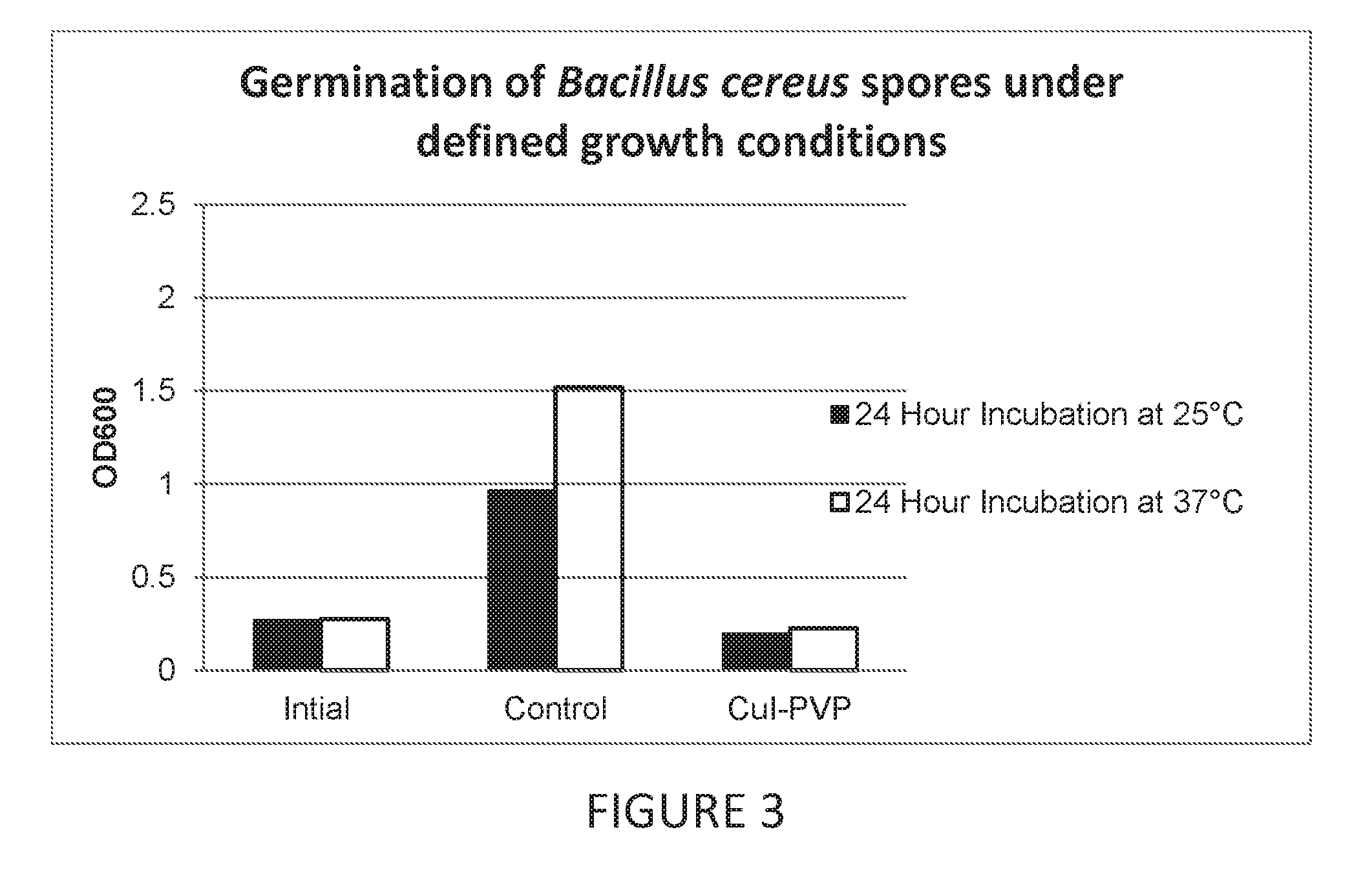Antimicrobial articles of manufacture produced from masterbatches
a technology of antimicrobial articles and masterbatches, which is applied in the direction of antifouling/underwater paints, dentistry, and disinfection, etc., can solve the problems of not being able to explain antiviral effects, and achieve the effect of enhancing economic viability
- Summary
- Abstract
- Description
- Claims
- Application Information
AI Technical Summary
Benefits of technology
Problems solved by technology
Method used
Image
Examples
example 1
Synthesis of CuI Particles Functionalized with PVP at Cu / PVP=1 / 3.3 w / w
[0237]10% PVP solution was made by dissolving 1 g Polyvinylpyrrolidone, mol. wt.=10,000 (Sigma-Aldrich #PVP10) in 9 g water. 2.232 g of this solution solution was added into the solution of 0.211 g Copper(II) acetate monohydrate (Sigma-Aldrich #217557) solution prepared by dissolving 1.057 mmol of the monohydrate in 6.227 g water under stirring. Afterwards, 0.3168 g sodium iodide (2.114 mmol) dissolved in 5 g water was dropped slowly into the copper solution and stirred overnight. Next day, the CuI suspension was washed to remove the formed iodine by extracting 7-10 times 2.5-3 ml with diethyl ether. The remaining ether was separated from the solution by evaporation under vacuum and then water was added to compensate for the loss of weight during processing. The final concentration of copper based on the calculation of metallic copper is 0.48% w / w. Reaction: Cu2++2I−→CuI2→CuI(s)+I2. 10% Aspartic acid solution was ...
example 2
Synthesis of CuI-PEG Dispersion w / pH Modifier
[0238]A dispersion of CuI surface modified with polyethylene glycol (PEG) was prepared in water using nitric acid as a pH modifier. To a reaction flask fitted with a stir bar was added 4.5 g of PEG (MW=10,000), and 0.0476 g CuI (99.999%) and 50 ml of acetonitrile. The mixture was stirred at room temperature for about 30 minutes to give a light green solution. The reaction flask was placed on a rotary evaporator and the solvent removed at 25° C. to a paste-like consistency. The temperature was then increased to 45° C. to complete removal of acetonitrile. This resulted in a yellow powder. This powder was dispersed in 50 ml of DI water and 0.05 ml (0.07 g) of concentrated nitric acid was added to form an off-white mixture. Upon stirring in the dark over night the dispersion became clear to give a light yellow dispersion.
example 3
Preparation of Ag / PVP Dispersion
[0239]To a round bottom flask fitted with a condenser was added 50 ml of DI water (18 Mohm-cm) and 20 g of PVP (10,000 MW, Sigma Aldrich Cat. # PVP10). The mixture was stirred at room temperature to form a clear yellow solution. To this solution was added 0.04926 g of silver nitrate (≧99.0% ACS reagent Sigma Aldrich Cat. #209139) and the solution heated to 70° C. for 7 hours while stirring. During this time the reaction was followed by optical absorption with the formation of the Plasmon peak at 425 nm due to the reduction of silver nitrate to silver metal by PVP. The final dispersion of Ag nano-particles was orange / brown in color and was transparent. Dynamic light scattering on a dilute sample of the dispersion gave a mean particle size of 7 nm.
PUM
| Property | Measurement | Unit |
|---|---|---|
| size | aaaaa | aaaaa |
| solubility | aaaaa | aaaaa |
| size | aaaaa | aaaaa |
Abstract
Description
Claims
Application Information
 Login to View More
Login to View More - R&D Engineer
- R&D Manager
- IP Professional
- Industry Leading Data Capabilities
- Powerful AI technology
- Patent DNA Extraction
Browse by: Latest US Patents, China's latest patents, Technical Efficacy Thesaurus, Application Domain, Technology Topic, Popular Technical Reports.
© 2024 PatSnap. All rights reserved.Legal|Privacy policy|Modern Slavery Act Transparency Statement|Sitemap|About US| Contact US: help@patsnap.com










